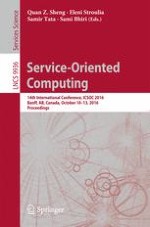This book constitutes the proceedings of the 14th International Conference on Service-Oriented Computing, ICSOC 2016, held in Banff, AB, Canada, in October 2016.
The 30 full papers presented together with 18 short papers and 8 industrial papers in this volume were carefully reviewed and selected from 137 submissions.
The selected papers covered important topics in the area of service-oriented computing, including foundational issues on service discovery and service-systems design, business process modelling and management, economics of service-systems engineering, as well as services on the cloud, social networks, the Internet of Things (IoT), and data analytics.
